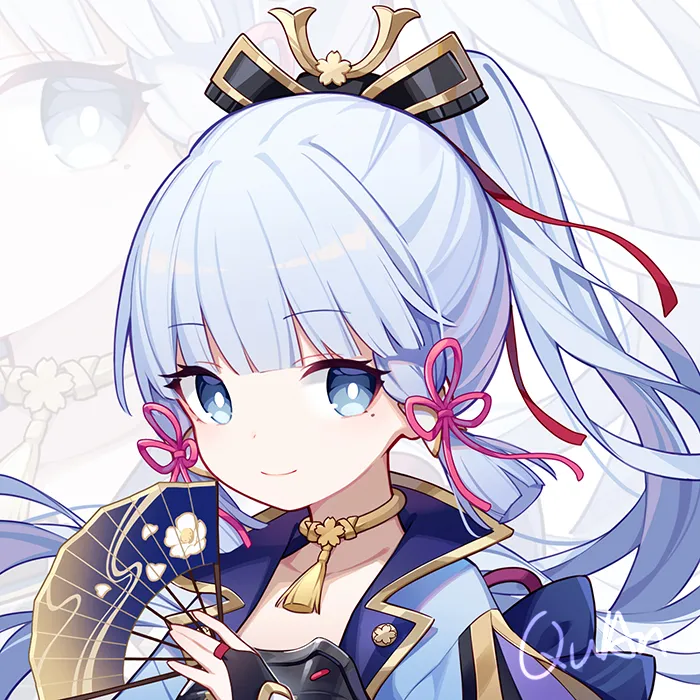蓝牙
蓝牙
在许多方法中,蓝牙是一种在两个不同设备之间发送或接收数据的方法。Android平台包括对蓝牙框架的支持,该框架允许设备与其他蓝牙设备无线交换数据。Android提供了蓝牙API来执行这些不同的操作。
扫描其他蓝牙设备
获取已配对设备的列表
通过服务发现连接到其他设备
Android提供了BluetoothAdapter类来与蓝牙通信。通过调用静态方法**getDefaultAdapter()**创建此调用的对象。其语法如下。
private BluetoothAdapter BA;
BA = BluetoothAdapter.getDefaultAdapter();
为了启用设备的蓝牙,请使用以下蓝牙常量ACTION_REQUEST_ENABLE调用该意图。它的语法是。。
Intent turnOn = new Intent(BluetoothAdapter.ACTION_REQUEST_ENABLE);
startActivityForResult(turnOn, 0);
除了此常量之外,API还提供了其他常量来支持不同的任务。它们在下面列出。
| 常量 | 说明 |
|---|---|
| ACTION_REQUEST_DISCOVERABLE | 该常数用于打开蓝牙的发现 |
| ACTION_STATE_CHANGED | 该常数将通知蓝牙状态已更改 |
| ACTION_FOUND | 此常数用于接收有关发现的每个设备的信息 |
启用蓝牙后,可以通过调用**getBondedDevices()**方法获取已配对设备的列表。它返回一组蓝牙设备。它的语法是。
private Set<BluetoothDevice>pairedDevices;
pairedDevices = BA.getBondedDevices();
除了被阻止的设备外,API中还有其他方法可以更好地控制蓝牙。它们在下面列出。
| 方法 | 说明 |
|---|---|
| enable() | 如果未启用,此方法将启用适配器 |
| isEnabled() | 如果启用了适配器,则此方法返回true |
| disable() | 此方法禁用适配器 |
| getName() | 此方法返回蓝牙适配器的名称 |
| setName(String name) | 此方法更改蓝牙名称 |
| getState() | 此方法返回蓝牙适配器的当前状态。 |
| startDiscovery() | 此方法将在120秒内启动蓝牙的发现过程。 |
示例
此示例演示了BluetoothAdapter类的知识,该类可操作蓝牙并显示由蓝牙配对的设备的列表。要试验此示例,您需要在实际设备上运行它。
- 您将使用Android Studio创建一个Android应用程序,并将其命名为Demo,位于com.jc2182.demo包下,如Hello World示例一章中所述。
- 修改src/MainActivity.java文件以添加代码
- 修改res/layout/activity_main.xml文件如果需要,可添加任何GUI组件。
- 修改AndroidManifest.xml以添加必要的权限。
- 运行该应用程序以启动Android模拟器并验证在该应用程序中所做更改的结果。
以下是修改后的主要活动文件src/com.jc2182.demo/MainActivity.java的内容。该文件可以包括每个基本生命周期方法。
package com.jc2182.demo;
import android.app.Activity;
import android.bluetooth.BluetoothAdapter;
import android.bluetooth.BluetoothDevice;
import android.content.Intent;
import android.os.Bundle;
import android.util.Log;
import android.view.View;
import android.widget.ArrayAdapter;
import android.widget.Button;
import android.widget.ListView;
import android.widget.Toast;
import java.util.ArrayList;
import java.util.Set;
public class MainActivity extends Activity {
Button b1,b2,b3,b4;
private BluetoothAdapter BA;
private Set<bluetoothdevice> pairedDevices;
ListView lv;
@Override
protected void onCreate(Bundle savedInstanceState) {
super.onCreate(savedInstanceState);
setContentView(R.layout.activity_main);
b1 = (Button) findViewById(R.id.button);
b2=(Button)findViewById(R.id.button2);
b3=(Button)findViewById(R.id.button3);
b4=(Button)findViewById(R.id.button4);
BA = BluetoothAdapter.getDefaultAdapter();
lv = (ListView)findViewById(R.id.listView);
}
public void on(View v){
if (BA != null){ // 设备不支持蓝牙
boolean isEnabled = BA.isEnabled();
if (isEnabled) {
Intent turnOn = new Intent(BluetoothAdapter.ACTION_REQUEST_ENABLE);
startActivityForResult(turnOn, 0);
Toast.makeText(getApplicationContext(), "Turned on",Toast.LENGTH_LONG).show();
} else {
Toast.makeText(getApplicationContext(), "Already on", Toast.LENGTH_LONG).show();
}
}else {
Log.i("Bluetooth:::", "Bluetooth not supported");
// Show proper message here
finish();
}
}
public void off(View v){
if (BA == null){
Log.i("Bluetooth:::", "Bluetooth not supported");
// Show proper message here
finish();
}
BA.disable();
Toast.makeText(getApplicationContext(), "Turned off" ,Toast.LENGTH_LONG).show();
}
public void visible(View v){
if (BA == null){
Log.i("Bluetooth:::", "Bluetooth not supported");
// Show proper message here
finish();
}
Intent getVisible = new Intent(BluetoothAdapter.ACTION_REQUEST_DISCOVERABLE);
startActivityForResult(getVisible, 0);
}
public void list(View v){
if (BA == null){
Log.i("Bluetooth:::", "Bluetooth not supported");
// Show proper message here
finish();
}
pairedDevices = BA.getBondedDevices();
ArrayList list = new ArrayList();
for(BluetoothDevice bt : pairedDevices) list.add(bt.getName());
Toast.makeText(getApplicationContext(), "Showing Paired Devices",Toast.LENGTH_SHORT).show();
final ArrayAdapter adapter = new ArrayAdapter(this,android.R.layout.simple_list_item_1, list);
lv.setAdapter(adapter);
}
}
以下是res/layout/activity_main.xml文件的内容-
<?xml version="1.0" encoding="utf-8"?>
<RelativeLayout
xmlns:android="http://schemas.android.com/apk/res/android"
xmlns:tools="http://schemas.android.com/tools"
android:layout_width="match_parent"
android:layout_height="match_parent"
tools:context=".MainActivity"
android:transitionGroup="true">
<TextView android:text="蓝牙示例"
android:layout_width="wrap_content"
android:layout_height="wrap_content"
android:id="@+id/textview"
android:textSize="35dp"
android:layout_alignParentTop="true"
android:layout_centerHorizontal="true" />
<TextView
android:layout_width="wrap_content"
android:layout_height="wrap_content"
android:text="蝴蝶教程"
android:id="@+id/textView"
android:layout_below="@+id/textview"
android:layout_centerHorizontal="true"
android:textColor="#ff7aff24"
android:textSize="35dp" />
<ImageView
android:layout_width="wrap_content"
android:layout_height="wrap_content"
android:id="@+id/imageView"
android:background="#22110033"
android:src="@drawable/logo"
android:layout_below="@+id/textView"
android:layout_centerHorizontal="true"
android:theme="@style/Base.TextAppearance.AppCompat" />
<Button
android:id="@+id/button"
android:layout_width="98dp"
android:layout_height="wrap_content"
android:layout_below="@+id/imageView"
android:layout_marginEnd="-48dp"
android:layout_marginRight="-48dp"
android:layout_toStartOf="@+id/imageView"
android:layout_toLeftOf="@+id/imageView"
android:clickable="true"
android:onClick="on"
android:text="打开" />
<Button
android:id="@+id/button2"
android:layout_width="98dp"
android:layout_height="wrap_content"
android:layout_alignBottom="@+id/button"
android:layout_centerHorizontal="true"
android:layout_marginBottom="4dp"
android:onClick="visible"
android:text="可见" />
<Button
android:id="@+id/button3"
android:layout_width="100dp"
android:layout_height="wrap_content"
android:layout_below="@+id/imageView"
android:layout_marginStart="-51dp"
android:layout_marginLeft="-51dp"
android:layout_toEndOf="@+id/imageView"
android:layout_toRightOf="@+id/imageView"
android:onClick="list"
android:text="设备列表" />
<Button
android:id="@+id/button4"
android:layout_width="102dp"
android:layout_height="wrap_content"
android:layout_below="@+id/button"
android:layout_alignParentStart="true"
android:layout_alignParentLeft="true"
android:onClick="off"
android:text="关闭" />
<ListView
android:id="@+id/listView"
android:layout_width="wrap_content"
android:layout_height="wrap_content"
android:layout_below="@+id/textView2"
android:layout_alignStart="@+id/button"
android:layout_alignLeft="@+id/button"
android:layout_alignParentBottom="true"
android:layout_centerHorizontal="true"
android:layout_marginStart="3dp"
android:layout_marginLeft="3dp"
android:layout_marginTop="31dp"
android:layout_marginBottom="-22dp" />
<TextView
android:layout_width="wrap_content"
android:layout_height="wrap_content"
android:text="配对的设备:"
android:id="@+id/textView2"
android:textColor="#ff34ff06"
android:textSize="25dp"
android:layout_below="@+id/button4"
android:layout_alignLeft="@+id/listView"
android:layout_alignStart="@+id/listView" />
</RelativeLayout>
以下是res/layout/activity_main.xml文件的内容-
<?xml version="1.0" encoding="utf-8"?>
<manifest xmlns:android="http://schemas.android.com/apk/res/android"
package="com.jc2182.demo">
<uses-permission android:name="android.permission.BLUETOOTH"/>
<uses-permission android:name="android.permission.BLUETOOTH_ADMIN"/>
<application
android:allowBackup="true"
android:icon="@mipmap/ic_launcher"
android:label="@string/app_name"
android:roundIcon="@mipmap/ic_launcher_round"
android:supportsRtl="true"
android:theme="@style/AppTheme">
<activity android:name=".MainActivity">
<intent-filter>
<action android:name="android.intent.action.MAIN" />
<category android:name="android.intent.category.LAUNCHER" />
</intent-filter>
</activity>
</application>
</manifest>
让我们尝试运行刚刚修改的应用程序。我假设您在进行环境设置时已创建了AVD。要从Android Studio运行该应用,请打开您项目的活动文件之一,然后工具栏中单击“运行”图标。Android studio将应用程序安装在您的AVD上并启动它,如果设置和应用程序一切正常,它将显示在“模拟器”窗口下面-

您可以依次点击各个按钮来测试蓝牙的功能。
